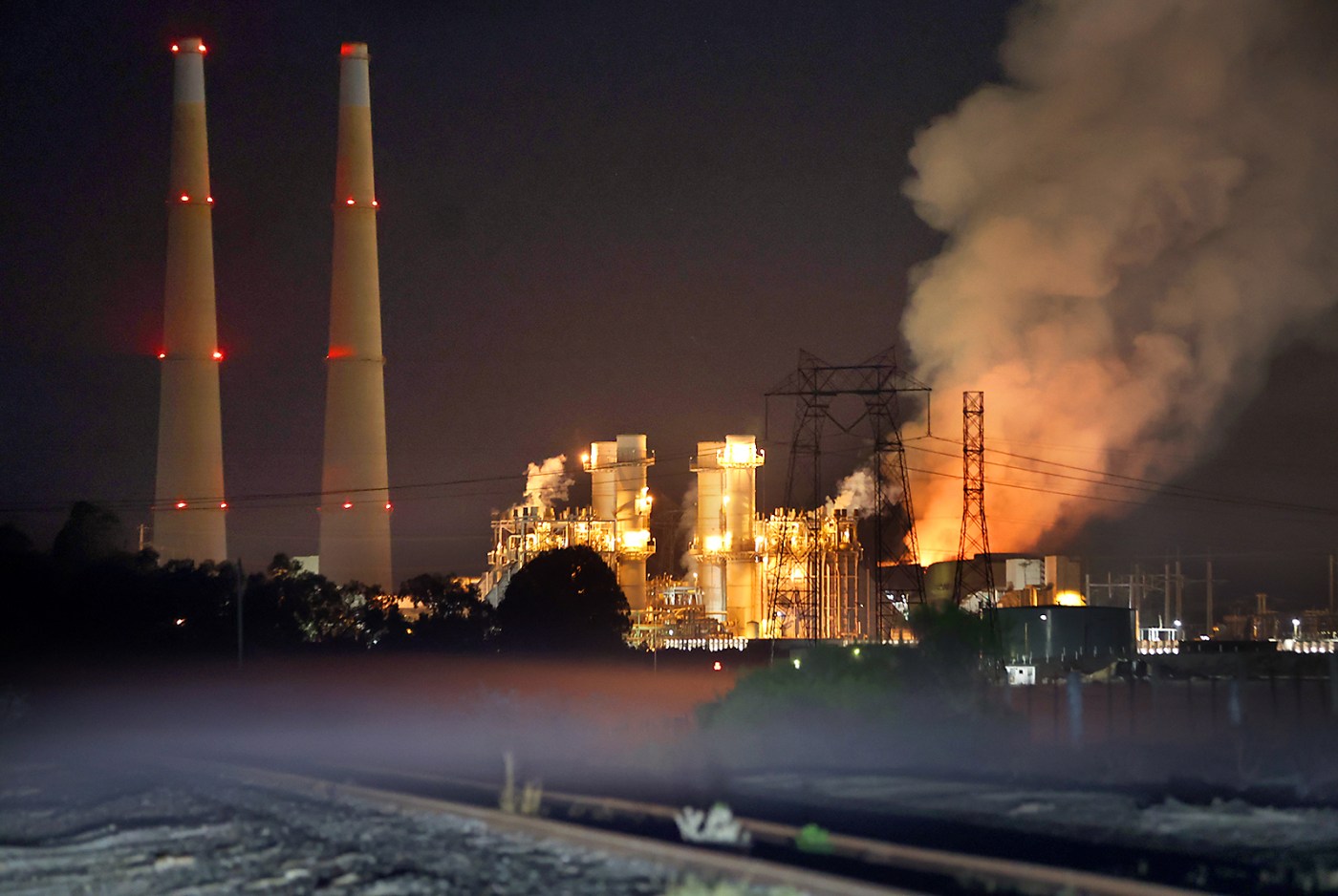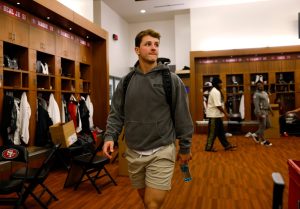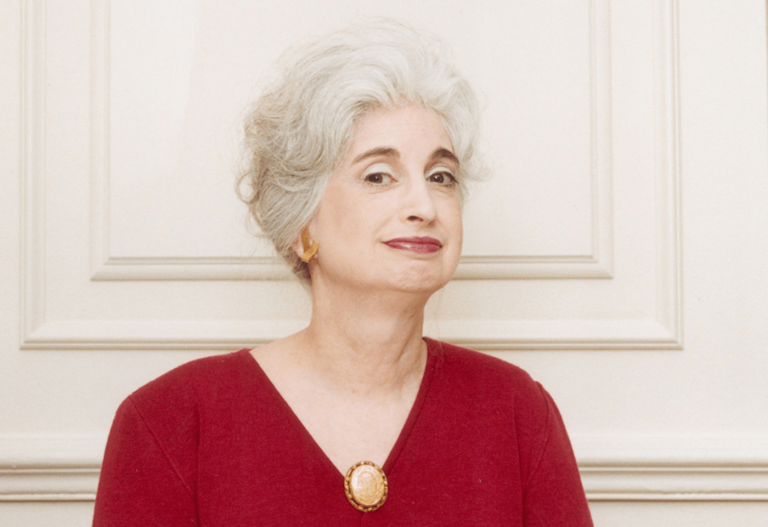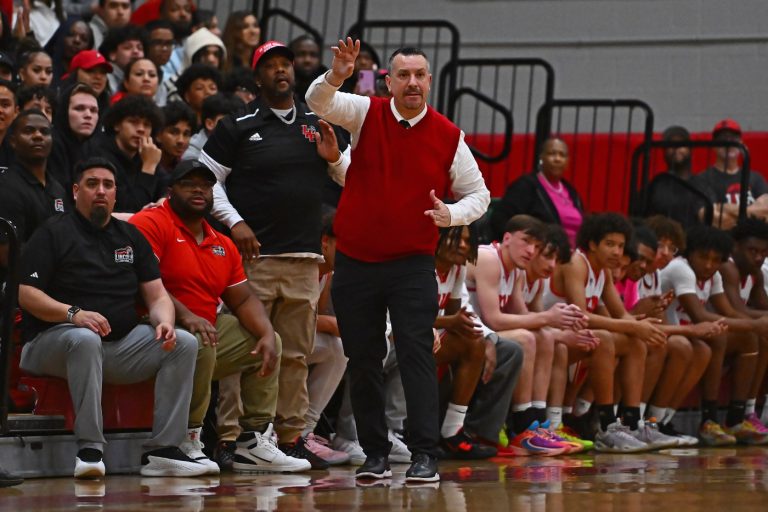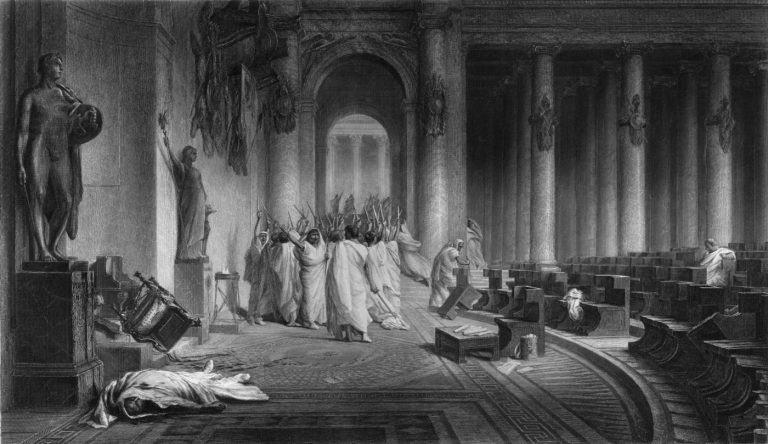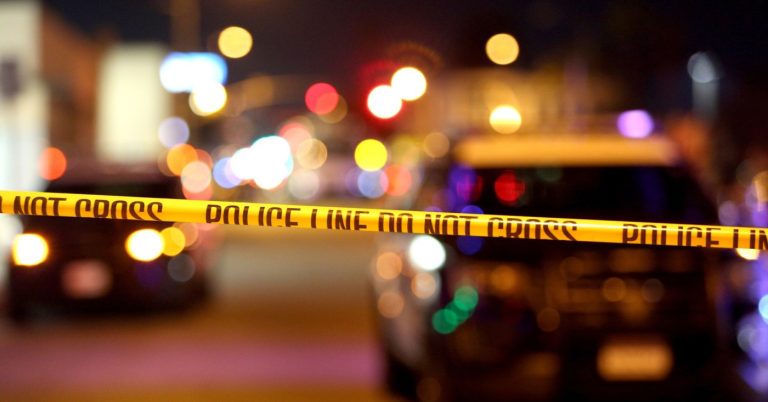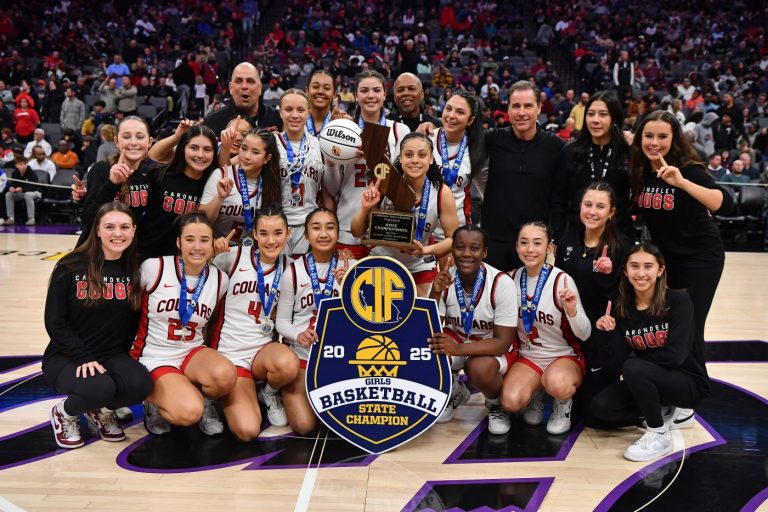A business park in South San Jose. Jack London Square in Oakland. The San Diego waterfront. Next door to a high school in Santa Barbara County.
Across California, large battery storage plants are being planned and constructed in dozens of locations at a pace faster than anywhere else in the United States. They are a critical part of the state’s plans to expand renewable energy, by storing electricity that solar farms and wind turbines generate to use later when the sun isn’t shining and the wind isn’t blowing.
But now, after a massive fire last month at one of the largest battery storage plants in the world — Moss Landing in Monterey County — caused the evacuation of 1,200 people, closed Highway 1 for three days, and released toxic heavy metals over the surrounding landscape, some leaders are urging new limits to keep the fast-growing technology away from populated areas.
There are now 187 battery storage plants in California — up from just 17 in 2019, according to the California Energy Commission. Battery storage has increased 1,340% in the past six years in California, from 928 megawatts in 2019 to 13,391 megawatts today. A megawatt is enough electricity to run 750 homes.
“We need these facilities,” said Assemblywoman Dawn Addis, a Democrat from Morro Bay, where voters in November rejected an oceanfront battery storage plant. “But we need to build trust when it comes to our clean energy future. We want to be careful about siting and make sure we aren’t putting school children, local business owners and residents at risk.”
Addis, whose district includes Moss Landing, has introduced a bill in the state Legislature that would ban new battery storage plants within 3,200 feet of homes, schools, businesses and hospitals. Under her bill, AB 303, new ones also would be prohibited in the state’s coastal zone, on earthquake faults, prime farmland, wetlands, hazardous waste sites, and in very high fire hazard severity zones on Cal Fire maps.
The bill also would block battery storage plants from being fast-tracked for approval in 270 days by state officials at the California Energy Commission, even if local cities and counties oppose the projects. Those rules were put into place in 2022 when Gov. Gavin Newsom signed a bill to speed the pace of renewable energy in California. So far, six projects have applied. None have yet been approved.
Addis is receiving pushback from the renewable energy industry, labor unions and some other Democrats.
Related Articles
Newsom’s executive order mandating 5-foot clearance around homes: What does it mean?
Martinez Refining Company provides new details on investigation into gas leak and fire
US House committee asks whether California policies are to blame for wildfires
Body cam video from Eaton fire shows police officers’ ‘Herculean effort’ to save residents
How the largest wildfire-fuel management project in the Bay Area is working to prevent disaster
“We share the goal of wanting an incident like Moss Landing never to happen again,” said Alex Jackson, California director of the American Clean Power Association, an industry group. “We just disagree on the approach. This bill is focused on making it more difficult to site new facilities. That’s not where we should be focused.”
Jackson and other industry leaders say the Moss Landing plant is unique. The battery storage plant was built in 2019 when the technology was in its infancy, constructed in a huge concrete warehouse that housed a former 1950s-era PG&E oil and gas-burning power plant. The lithium-ion batteries were stacked, and made of older chemistry using nickel, manganese and cobalt, which can cause runaway fires when ignited.
Newer plants, he noted, use lithium-iron-phosphate batteries, which are less prone to fires. The units are often arranged outside and housed in individual metal containers, each roughly the size of an 18-wheel trailer, so if a fire starts, the chances of it spreading are very low.
Jackson said in the wake of the Moss Landing fire, the state should review the older battery plants instead of blocking new ones that are needed to meet increasing electricity demands as more people drive electric vehicles and artificial intelligence requires more data centers.
“We don’t have to choose between clean energy and community safety,” he said. “The technology is proven. It’s safe. The appropriate response is to take a look at some of those legacy facilities that are not representative of state-of-the-art.”
Smoke and flames are seen from Castroville as a fire at the Vistra battery storage plant burns in Moss Landing, Calif., on Friday, Jan. 17, 2025. (Doug Duran/Bay Area News Group)
One challenge is the lightning-fast pace at which battery storage is spreading throughout the state. No state agency keeps a public list showing how many more are planned, where, and when they are expected to be built.
But a review by the Bay Area News Group of a U.S. Department of Energy database of all planned energy projects nationwide found at least 96 new battery storage plants are under construction in California or planned to be built by 2027.
They include the 75-megawatt Hummingbird project at 6321 San Ignacio Ave. in South San Jose, near Highways 85 and 101. Approved by San Jose officials, it is being constructed by esVolta, a Newport Beach company, to store electricity for PG&E. It is scheduled to open next month.
Another is planned near Jack London Square in Oakland. Vistra Energy, the Texas company that owns the Moss Landing plant, also owns an aging Dynegy power plant at 50 Martin Luther King Jr. Way. The company has been planning for several years to build a 43-megawatt battery plant on the site by May 2027.
The largest under construction in the state is the 275-megawatt Kola Energy Center eight miles east of Livermore, on Patterson Pass Road. It is scheduled to open this summer.
To the south, the Painter Energy Storage Project in Santa Barbara County is being built across the street from Carpinteria High School. In San Diego, there are multiple plants being planned and built inland, and one, called the Peregrine Energy Storage Plant, is under construction one mile south of Petco Park.
Local officials near Moss Landing say more limits on new plants are needed.
“Moss Landing was approved because we were promised it was going to be safe,” said Monterey County Supervisor Glenn Church. “That promise couldn’t be fulfilled. If people want to be concerned about health and safety in their neighborhoods, what’s wrong with that?”
The fire has put environmental groups, who have supported battery technology, and their legislative champions, in a tough spot.
State Sen. John Laird, D-Santa Cruz, is the former secretary of natural resources under Gov. Jerry Brown. He said he has serious concerns with the Addis bill. New technology is better than Moss Landing’s, he said, and the state should focus on older plants rather than limiting new ones.
“We have three goals here,” Laird said. “To keep the lights on, to move off fossil fuels, and to be safe in doing it. We just can’t sacrifice one for the other. We have to meet all three.”
State assemblyperson Dawn Addis talks about the fire at the Vistra battery storage facility in Moss Landing during a press conference in Castroville, Calif., on Friday, Jan. 17, 2025. (Doug Duran/Bay Area News Group)
